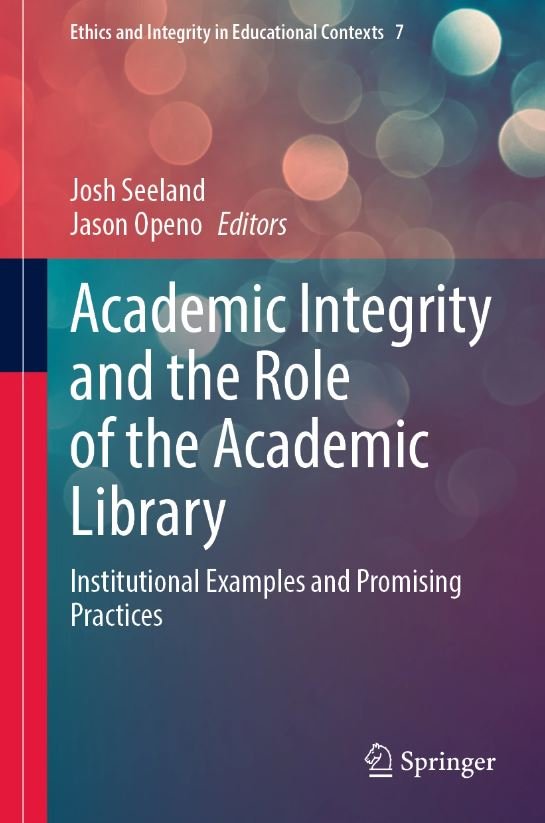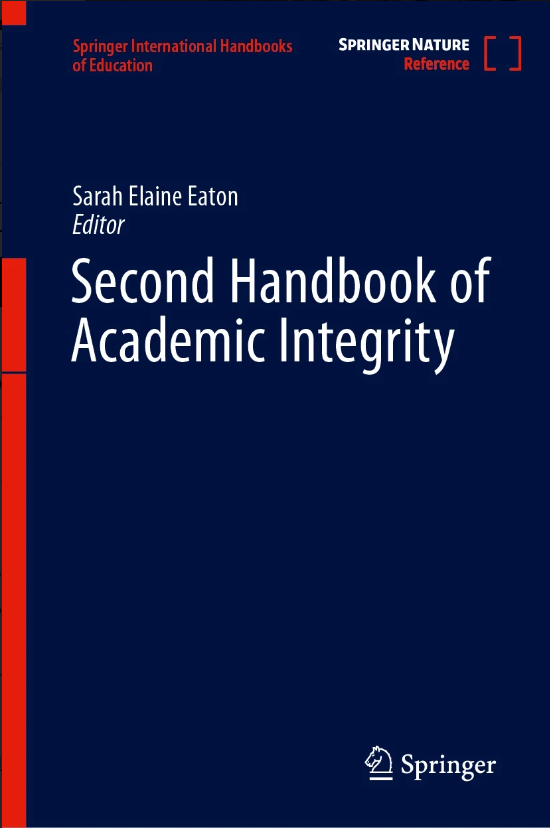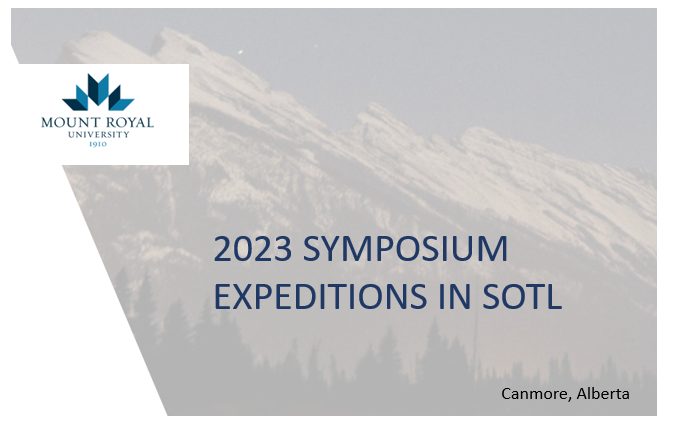I led a session at the SoTL Commons Conference in Savannah, Georgia in February 2025 that is the result of my life’s various experiences. I have been a part-time instructor needing development, the director of a faculty support unit that built programs for PT faculty, and I am now a dean in a large school that employs several PT faculty.
Part-time faculty have been described as indispensable but invisible, and since the 1970s, the major way colleges and universities have tried to lower their expenditures has been through the swelling employment of part-time instructors in place of full-time faculty. This 50-year long trend appears to be accelerating in tandem with the increased expense of educational technology. Consider: “Between 2004 and 2010, total campus teaching staff in the United States grew by about 200,000. Full-time instructors increased by about 11%, while part-time adjuncts increased their number by nearly 30%” (Aoun, 2017, p. 131). Last year, educational technology expenditures in North America were about $76.8 billion. As postsecondary institutions spend more on tech, they spend less on people.
This human resources trend is similar in Canada. More than half of all university faculty appointments in Canada are now contract appointments.
Nothing universal can be said about any group of people. Sessional faculty are a heterogenous group and there are very good reasons to use them, if they are used well. Contract faculty tend to be younger, a majority are women, and they are a mix of working professionals, retired professors, and those cannot find permanent, full-time academic appointments. Not all part-time faculty are precariously employed, but many are, and this is why scholars refer to two classes of adjunct faculty as voluntary and involuntary. Voluntary contingent faculty are more satisfied with their role and do not suffer from “incoherent and conflictive” identities.
Involuntary contingent faculty, on the other hand, “are divided selves, chameleon-like: they both accept and reject aspects of their professional roles and status; they live in the present but also in a future that is projected as better than the present.”
I have only been a voluntary part-time faculty member. I enjoyed teaching one course a year. But as an educational developer, I could see we were not serving a large part of our faculty, and as an administrator, I began to wonder about the cost of that marginalization.
Ran and Xu conclude their study of the relative effectiveness of part-time faculty by saying that the cost-savings of using part-time faculty, “may be much more complicated and obscure than expected.” In their study, students of part-time faculty received better grades than those taught by full-time faculty, but these students were also more likely to drop out of a major and postsecondary studies in general. Hiring part-time faculty appears cheaper, but this apparent cost savings must be weighed against the evidence that increased exposure to part-time faculty decreases student retention and completion in post-secondary studies. This evidence suggests the lost tuition revenue and decreased public support from bad learning experiences must be weighed against part-time faculty, who again, are not bad instructors, but instructors often put in non-ideal circumstances that do not enable them to succeed.
As a former educational developer who is now part of our senior academic leadership team, part-time faculty became a strategic focus for me. There’s a good body of work on the impacts of part-time faculty as individuals, and on students, but I couldn’t find any management literature questioning the use of part-time faculty as a cost-savings strategy, or the negative impact on the educational mission.
How do we heal these divided selves and begin to address the very complicated cost equation, recognizing of course that we can’t reverse 50 years’ worth of deprofessionalization in one master stroke? That became the essence of my research into part-time faculty development, which can eradicate some of the most “egregious aspects” of the growing adjunct situation.
What are the truly unique professional development needs of part-time instructors? And how do we get them more involved in SoTL?
To answer these questions, I conducted email interviews with over a dozen directors of teaching and learning centres across Canada. This blog post contains a brief description of the model that emerged from those conversations.
Teaching Identity
Teaching identity is a complex and multifaceted concept, but intentionally building a teaching identity for part-time faculty is vital because it touches every aspect of faculty work, including their research. Based on what I heard from directors of teaching and learning centres, part-time faculty may not see teaching as their “real job.” As one individual said, “I would say the biggest challenge is guiding faculty new from industry to see themselves as teachers.” Because of their part-time situation, part-time may also hold self-limiting beliefs, such as fear of being judged, or not being “real faculty.”
To confront this head-on, faculty development units in Canada were adapting holistic frameworks, such as Charlotte Danielson’s four domains of practice (Planning, Classroom Environment, Instruction, and Professional Responsibilities), or Maxwell’s Fail Forward philosophy, which separates the teaching self from teaching performance so that one’s self image is not dictated by external events. Failing forward is a strengths-based approach where failure is perceived as a momentary event so that individuals can be encouraged to find the approach that works for them and bounce back so that past attempts do not attack self-confidence.
SoTL could easily fit into a professional responsibilities or as a way of experimenting with new teaching approaches.
Patricia Cranton & Ellen Carrusetta’s five dimensions of authenticity in teaching would also be a great tool for building a teaching identity. Their five dimensions of authenticity begin with understanding oneself as a teacher and being able to articulate their teaching story and preferred teaching style.
Experiential Spectrum
The interviews indicated that educational development units face the same challenges of faculty teaching a classroom of 300 students. All learners exist along a spectrum of ability and experience, but most academic development opportunities, like most other teaching and learning environments, have a group of learners inhabiting the same learning environment and encountering the same material, which is why a professional development opportunity can be transformative for some and unenlightening for others.
The professional development needs for faculty will vary on the subject area, the instructor’s prior teaching experience, the comfort with certain instructional modalities, and their instructional beliefs.
Most pedagogical training is focused on new instructors and may not meet the advanced needs of more experienced part-time educators. Therefore, teacher development for part-time educators must provide personalized opportunities to instructors according to their need, experience, and skill level.
Designing individually-tailored learning experiences runs counter to the demands, experienced intensely during the pandemic, to provide professional development at scale.
Yet, this will become increasing important as educational development evolves because there will increasingly be a need to serve both novices who need orientation to proven and effective practices, and faculty who have become more proficient educators who now desire advanced opportunities to play with instructional designs and experiment with engaging new teaching tools.
Identifying part-time faculty who possess the drive to maintain their research portfolios and more experienced part-time faculty may be the first step in extending the Scholarship of Teaching and Learning to part-time faculty.
Autonomy
Based on my interviews and the best Canadian research available, many adjuncts are simply given a textbook and a syllabus and are then asked to teach course sections in classes they have never taught. This is of course a worst-case scenario, but one that is repeated at the beginning of every semester on college campuses across North America. This lack of preparation does not serve students.
And it doesn’t serve part-time faculty.
The directors of teaching and learning I spoke with recognized that many part-time faculty have little to no autonomy, and this lack of autonomy can potentially constrain teaching practices and provide a justification for not offering sufficient professional development. Part-time instructors may not know who owns the intellectual property in their courses or have a clear understanding of their right and role in course ownership.
Returning to Cranton and Carrusetta, they studied community college faculty in Canada with mandated curriculums, predetermined assessments, and other constraints who still found “interesting and innovative strategies for maintaining their stance as adult educators in a context that has many constraints against doing so” (p. 76).
They found that faculty learners want self-directing, collaborative learning activities. Engaging in a scholarship of teaching and learning team may provide the self-directed autonomy and collaboration that part-time educators lack.
Good teaching at the college level should “involve at least some measure of creativity and professorial autonomy over the conditions of faculty work,” and engaging in the Scholarship of Teaching and Learning is a way to introduce much needed autonomy to the part-time faculty role.
Assessment
Assessment is a perennial professional development topic for all faculty, but the best evidence available suggests that adjuncts use fewer assessment practices that foster student success and learning, including collaborative and active learning strategies, and creating challenging assignments for students. The non-ideal working conditions of part-time faculty do not often recognize the amount of time involved in providing meaningful, student-centred assessment practices. Assessment is some of the hardest, most-time consuming work of teaching.
Contract instructors may be given mandated assessments for their courses that may not align with their teaching identity or allow for the exercise of instructional autonomy. Consequently, contingent faculty are least likely to understand the whys and hows of assessment, and studies suggest they also grade more leniently as a job retention strategy.
Faculty should engage in more student-centred assessment practices, but that means faculty will be measuring what is hard rather than what is easy, thereby making assessment more difficult and more subjective. Part-time faculty need support in designing assessments that align to learning outcomes, leverage the affordances of technology, and allow them to assess complex skills. But they must also receive this support within professional development programs that recognize their unique working conditions by recommending reasonable assessment strategies that allow for some instructional autonomy and are cognizant of their economic realities and the increased pressure to achieve favourable student ratings.
All of this is fruitful terrain for meaningful scholarship of teaching and learning.
Research-Practitioner
Scholarly teaching, or critically reflecting on teaching practice is an intuitive, imaginative, and affective process. When formalized, critical reflection and scholarly teaching become part of the Scholarship of Teaching and Learning (SoTL).
Part-time faculty need to engage in SoTL because teaching practice is undergoing rapid change and more knowledge is being legitimated pragmatically rather than logically or empirically. Many instructors are following their instincts to meet new and increased demands, especially those presented by generative artificial intelligence. The teaching community needs to formalize and share these pragmatic insights to proactively drive, rather than react to, technological and pedagogical change. In a world defined by flux and contingency, we must tap into the world of lived experience. SoTL, and the desire to improve student learning through the investigation of teaching practices, encourages practitioner-researchers to describe precisely what they do and explain why and how certain processes effect or enhance student learning.
As Jarvis (1998) put it almost 30 years ago, “we can no longer assume that the research conducted in the past is replicable in the future” (p. 165). With changing demographics, modalities, conditions, and student abilities, and generative artificial intelligence, Jarvis’ observation is more poignant now. Consequently, many research projects need to be “small, local, and practical” (p. 167).
SoTL possesses the ability to unify the teaching identity, improve assessment practice, and introduce much needed autonomy back into the part-time faculty experience. Building research-practitioners rejects the unbundling of faculty into teaching specialists and researchers.
Many part-time faculty struggle to maintain their research profiles, but engaging in authentic, action-based research, including SoTL, is work that part-time online faculty may not be encouraged to participate in through professional development funds or receive compensation for. Hence the need for community and compensation.
Community
Social learning theories suggest learning is grounded in relationships, and the teaching identity is formed, in part, through relationships. As revealed in the interviews, one institution, in particular, was heavily invested in building community seriously, assigning all new part-time faculty a mentor to combat faculty isolation.
If institutions do not provide mentoring or take steps to meaningfully integrate part-time faculty, the institution sends the message that they do not deserve an investment of institutional effort. Furthermore, they will have no grounding in the institutional mission or the academic program’s goals. If contingency itself breaks down connections, then engaging with the SoTL community can reverse this trend. By reaching out to part-time faculty and supporting their involvement in the scholarship of teaching and learning, institutions are communicating that part-time faculty matter, which is defined as the feeling that someone counts. As does compensation.
Compensation
As an administrator, I regularly confront the sad fact that universities and colleges “are among the least engaged workplaces in the world” that “are failing to maximize the potential of their biggest asset – their faculty and staff” (Gallup, n.d., para. 1). This lack of engagement incurs real costs in the form of negative outcomes related to retention, persistence, graduation, transfer, and academic performance, particularly among first generation, low-income, and racially minoritized students, who are being called the new majority.
A defining hallmark of the professional teaching identity is professional development, but like research and scholarship, professional development has been unbundled from the teacher identity. Several directors I interviewed were taking this seriously and ensuring there were PD and research funds available for part-time faculty.
Considering the unknown costs to student retention and persistence when exposed to part-time faculty, the investment in professional development and scholarly activity for part-time faculty should be one that institutions are eager to extend. Research, especially research into the teaching experience, enables institutions to demonstrate a commitment to quality and continuous improvement. Providing adequate compensation for part-time faculty for research and scholarship or to attend professional development opportunities are two methods for reprofessionalizing part-time faculty and creating a more unified teaching self.
If it’s not compensated, it is unreasonable to expect part-time faculty – who now occupy somewhere between 50-70% of all faculty appointments in North America – to engage in this kind of activity, and institutions and their students are the ultimate losers. In a rare piece of research exploring the intersection of part-time faculty status and engagement in SoTL, the researchers wrote: “unless and until institutions change the conditions of contingency to support the full engagement of instructors in SoTL, we cannot recommend contingent instructors devote time and energy in this unpaid capacity.” Educational Development units, especially, can advocate for the kind of systemic change required.
Canadian teaching and learning centres are intentionally building teaching identities for part-time faculty who don’t identify themselves as “teachers.” Recognizing that part-time faculty are a heterogenous group with varying levels of experience, they are focusing on personalized services. in addition to building basic competence for new instructors, they are starting to talk to part-time faculty about the unique issues related to autonomy and assessment. Institutionally, they are trying to build research teams, and they are making sure that PT faculty have access to professional development and research funds.
Making the strategic choice to grow part-time faculty participation in SoTL is important for a few institutional reasons:
1. The best evidence suggests students are negatively impacted by exposure to part-time faculty. This isn’t because part-time faculty are “bad instructors” but because they are put in non-ideal working conditions. Building research-informed instruction is a strategic choice that institutions need to make at a time when postsecondary participation is being questioned in ways it never has been.
2. By building research-practitioners, institutions will be empowering individuals who have a better understanding of what they are doing and why. Engaging in SoTL is a creative way to rebundle the faculty identity, and this is a strategic choice that begins to recognize that there is a more complicated cost calculus. I doubt PT faculty engagement in SoTL is a metric that will have a direct impact on institutional rankings, but improved student success certainly will.
3. SoTL occupies a weird space in the academy. It is not hard to find the sentiment in the literature that SoTL is not considered “real research.” SoTL has battled for legitimacy for 30 years (desperately wanting to be counted in promotion and tenure decisions), but engaging in SoTL is also a privilege. If we want SoTL to grow (and I do), we need to continue the battle for legitimacy, but also extend SoTL to the margins.










